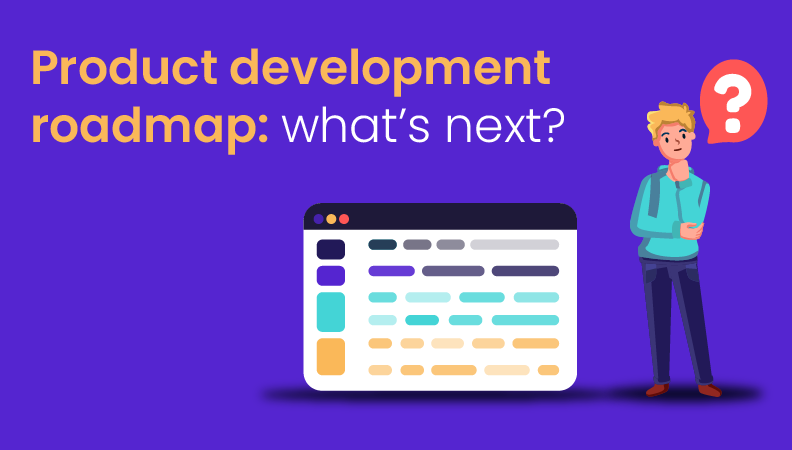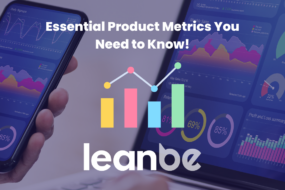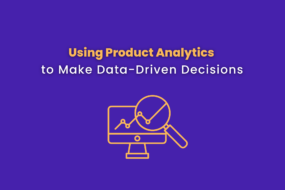
Product Roadmap: What’s Next?
A product development roadmap is a strategic document that’s used to guide and communicate the direction of a product. It’s an essential and practical way to launch and develop your products. Product development is a complex procedure, hence it’s good to have a roadmap that helps you navigate the qualities of your product.
By the end of this article, you will know what’s a product development roadmap and how you can make one yourself.
Product Roadmap as a realistic approach to future plans
Product roadmaps can actually give you an idea of where your product may get to in the upcoming years. This helps you to plan ahead and come up with a business strategy that revolves around your product.
Through these roadmaps, you get a realistic view of the future of your product. What’s more interesting is that product roadmaps usually focus on long–term goals ranging from 5 years to 10 years!
How to create a product roadmap that’s most likely to come to life?
Product roadmaps are usually targeted to the future of the product, but they should also be realistic. Goals shouldn’t be too overwhelming.
Predict your potential customers in the upcoming years and plan accordingly.
How to Identify the Priorities of the Tasks Ahead?
Identifying priorities is important. You need to know what you need to work on next. Here are some steps to help you define priorities:
1. User Feedback
User feedback is a powerful practice that lets you know which part of the product falls short in terms of quality. It lets you know if your current initiative is functioning.
2. Kano Model
The Kano Model is used to understand product how the product functions and reveal the level of customer satisfaction. It lets you prioritize a balanced product roadmap.
3. Value vs complexity
The value versus complexity model is a common way of prioritizing things that many companies use. It’s fairly easy to apply too. It’s as simple as drawing a plot of potential features, their estimated business value, and the amount of work required to do that. And here you have the big picture.
Measuring the Potential Business Impact of Future Actions
This approach is used to maximize the potential value of the product for the broadest audience. Even though the plan is for the future, it has to be exciting, inspiring, and realistic at the same time.
It’s vital to do measurements of the potential business impact of any minor or big change you’re planning because you might really have put the emphasis on the wrong action. Try to pre-evaluate what will a certain action bring: revenue, customer satisfaction, more user base, new subscribers… anything. Just measure it beforehand to be able to see if it’s worth the time and effort or not.
Roadmap Creation and Data Analysis Tools
Creating a roadmap can be long and tiresome. So, here are some tips to get you going:
1. Build your strategy and have a vision of your product
Hold a meeting with senior executives, ask your customers, employees, stakeholders and analyze your competitors. Choose whatever is working in the now and define the perfect vision for your product.
2. Define your audience
You have to ask yourself a question “What type of people will use my product?”. Defining an audience is a complex procedure and it needs a good understanding of your potential customers, their preferences, needs and pain points. Hence, customer feedback also plays a vital role in this part.
3. Use Data Analysis Tools
Data analysis tools or metrics are important to understand where your company stands. Excel is a good tool. However, excel is not the only one. There are numerous tools out there, which are even better.
Roadmap Generation Systems: Which One is Right for You?
Nowadays, there are abundant tools that help you create your own roadmaps. Among them are paid and free ones. The best ones are those that help you create a roadmap easily, edit them and make it simple to understand even if the software is a bit expensive.
Some tools even have their own templates which can be customized according to your needs. These easily let you create a functional roadmap.
Here are some to help you in your product development roadmap journey:
- Leanbe (Best data driven roadmap generation platform)
- Trello (Kanban style project planning and scheduling)
- Tara (Quick task insights)
- Sharpcloud (Roadmapping guidance)
- Productboard (Understanding customer needs and prioritizing tasks)
- Roadmap Planner (Best for showing future stages of the product)
- Zenhub (Best for planning roadmaps)
- Coda.io (Good for planning)
- Openproject (Linux open source roadmap tool)
- Airtable (Roadmapping with powerful filtering, sorting)
- StoriesOnBoard (Best visual product roadmap tool)
Is there a tool you’ve already been using? What functionality gaps do you see in roadmap creation tools?




